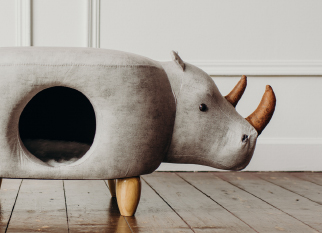What are the temperature requirements for the storage of outdoor rubber extension cord
In the field of power transmission and distribution, the Outdoor Rubber Extension Cord plays an indispensable role as an important medium for connecting power sources and electrical equipment. Its excellent insulation performance, excellent weather resistance and flexible use make it the preferred tool for outdoor activities. However, to ensure that the outdoor rubber extension cord can achieve optimal performance during use, temperature management during storage is particularly important.
Temperature influence of rubber materials
Rubber materials are the main component of outdoor rubber extension cords, and their physical and chemical properties are significantly affected by temperature changes. High temperature environments accelerate the thermal motion of rubber molecules, leading to the breakage of rubber chains and the destruction of cross-linked structures, which in turn causes rubber aging. The specific manifestations of aging include hardening and brittleness of the material, reduced elasticity, and even cracks. On the contrary, low temperature environments inhibit the activity of rubber molecular chains, making them rigid, which in turn affects the flexibility and bending performance during use. Therefore, appropriate temperature control is essential to maintain the performance of rubber materials.
Ideal storage temperature
To ensure that the outdoor rubber extension cord maintains optimal performance during storage, it is recommended to control the storage temperature within the range of 10℃ to 25℃. This temperature range can effectively prevent the aging of rubber and prevent the material from becoming rigid, thereby ensuring the stability and performance of the rubber. Through reasonable temperature control, the service life of the extension cord can be significantly extended, and its safety and reliability can be improved.
Practical strategies for temperature control
Storage environment selection: Warehouses storing outdoor rubber extension cords should have good temperature control capabilities and be equipped with air conditioning or constant temperature systems to ensure that the indoor temperature is always maintained within the ideal range. At the same time, the doors and windows of the warehouse should be kept sealed to prevent the impact of external temperature fluctuations on the indoor environment.
Temperature monitoring and control: Install temperature monitoring equipment in the warehouse to record temperature data in real time and adjust it according to actual conditions. When the temperature exceeds the ideal range, immediate measures should be taken, such as turning on the air conditioner or adjusting the set value of the constant temperature system to ensure that the temperature quickly returns to an appropriate level.
Seasonal management * Develop corresponding management strategies for temperature changes in different seasons. In summer, special attention should be paid to the cooling measures of the warehouse to ensure the coolness of the internal environment; in winter, it is necessary to strengthen insulation work to ensure the stability of the indoor temperature and prevent the material from being damaged by low temperature.
Impact of temperature on storage life
Temperature is one of the key factors affecting the storage life of outdoor rubber extension cords. Long-term storage in high or low temperature environments will accelerate the aging process of rubber materials and shorten their service life. Therefore, by properly controlling the storage temperature, it can not only effectively extend the service life of outdoor rubber extension cords, but also reduce the safety hazards caused by material aging. By implementing a scientific temperature management strategy, companies can improve customer experience and enhance market competitiveness while ensuring product quality.


 English
English русский
русский 中文简体
中文简体 Español
Español













